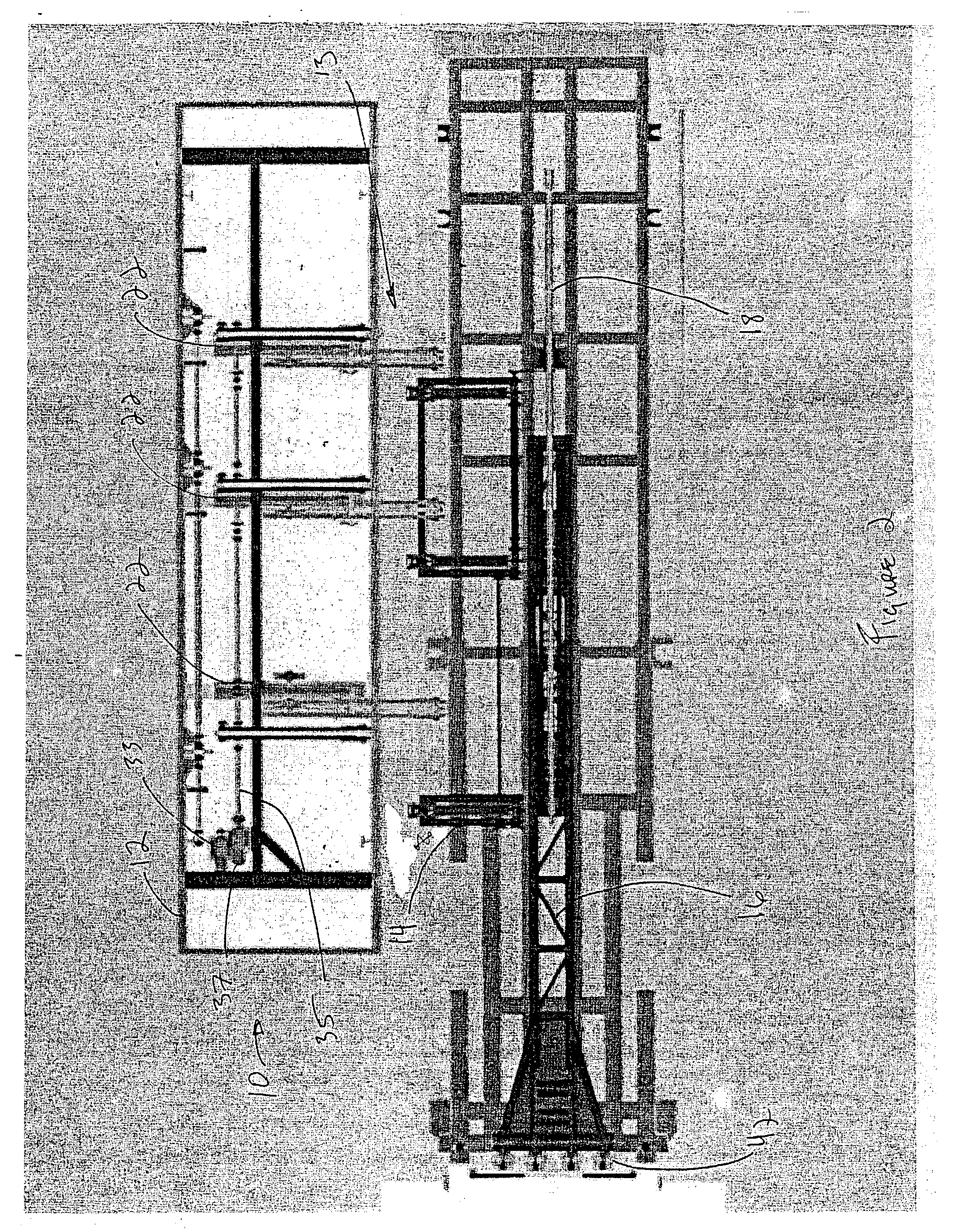Tubular handling apparatus and method
a tubular and handling technology, applied in the field of tubular handling apparatus and method, can solve the problems of inconvenient pipe-handling operations, increased labor intensity, and increased labor intensity of a single rig, so as to eliminate or minimize the need for time-costing manual labor, save time and labor intensity, and save tim
- Summary
- Abstract
- Description
- Claims
- Application Information
AI Technical Summary
Benefits of technology
Problems solved by technology
Method used
Image
Examples
Embodiment Construction
[0018] In one embodiment, the pipe handling system comprises a pipe magazine, a pipe conveyor system, and a pipe arm for use in automatically handling pipes in conjunction with a drill rig for drilling a well bore. Alternatively, the pipe handling system includes multiple pipe magazines, each with conveyor systems that transport the pipe from one pipe magazine to another until the pipe is delivered to the pipe arm.
[0019] In operation, the pipe handling system runs in two modes, RIH mode where pipe is delivered from the magazine and POH mode where pipe is delivered to the magazine.
[0020] In the RIH mode, the pipe magazine delivers joints of pipe to the pipe conveyor system. The pipe conveyor system receives the joint of pipe from the magazine and then delivers the joint of pipe to the pipe arm. Clamps on the pipe arm then clamp around the pipe joint and hold it as the pipe arm pivots from a horizontal position to a vertical position. The pipe arm then presents the pipe joint over the...
PUM
 Login to View More
Login to View More Abstract
Description
Claims
Application Information
 Login to View More
Login to View More - R&D
- Intellectual Property
- Life Sciences
- Materials
- Tech Scout
- Unparalleled Data Quality
- Higher Quality Content
- 60% Fewer Hallucinations
Browse by: Latest US Patents, China's latest patents, Technical Efficacy Thesaurus, Application Domain, Technology Topic, Popular Technical Reports.
© 2025 PatSnap. All rights reserved.Legal|Privacy policy|Modern Slavery Act Transparency Statement|Sitemap|About US| Contact US: help@patsnap.com



